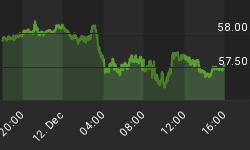Bob Prechter's Conquer The Crash reveals whether the Fed really can rescue the US economy
Since its creation in 1913, the primary intended role of the U.S. Federal Reserve Bank has been that of protector. In theory, the central bank was bestowed with the power to shape monetary policy in a way that would keep both booms and busts in check. The two main tools at its disposal -- interest rates and money creation -- would provide a "ceiling of normalcy" above expansions AND a "net of safety" below contractions.
To this day, the financial mainstream holds great faith in the Fed's ability to fulfill its save-the-day duties -- as these recent news items make plain:
- "Why Raising Fed Funds Rate Is Positive For Equities." (Seeking Alpha)
- "Fed's Moves Lift All Asset Classes." (Associated Press)
- "US Stocks Erasing Losses: The aggressive moves of the Fed have been an important driver for the stabilization of stock prices." (Bloomberg)
But of all the variables the Fed creators took into account, there's one glaring factor they neglected to consider: Namely, it cannot force consumers to spend, creditors to lend, or businesses to borrow. The events of 2007-2009 "credit crunch" and the subsequent "Great Recession" made that obvious. Remember how the government was upset at banks for sitting on the bailout funds instead of lending them out to consumers? And consumers weren't exactly lining up on the street to get a loan, either.
The Fed's inability to change social mood is the central theme in Chapter 13 of EWI President Bob Prechter's NY Times business bestseller book Conquer the Crash. There, Bob describes the Fed's strategy of lowering the federal funds rate to stimulate spending to be as effective as "pushing on a string." Writes Bob:
"The primary basis for today's belief in perpetual prosperity and inflation with an occasional recession is what I call the 'Potent Directors Fallacy.' It is nearly impossible to find a treatise on macroeconomics today that does not assert or assume that the Federal Reserve Board has learned to control both our money and our economy. Many believe that it also possesses the immense power to manipulate the stock market. The very idea that it can do these things is false."
And so begins one of the most groundbreaking studies into the very real INABILITY of the Fed to fell the great bears of economic declines, or to feed the great bulls of economic vigor.
The best part is, you can read Chapter 13 of Conquer the Crash in its entirety FREE via a Club EWI resource "You Can Survive And Prosper In A Deflationary Depression." The free report also includes SEVEN other chapters of Conquer the Crash that shed equal light on some of the most misleading notions of mainstream economic wisdom.
Don't stay in the dark. Read all 8 chapters today by joining the rapidly expanding free Club EWI community today. Here's what you'll learn:
- Chapter 10: Money, Credit and the Federal Reserve Banking System
- Chapter 13: Can the Fed Stop Deflation?
- Chapter 23: What To Do With Your Pension Plan
- Chapter 28: How to Identify a Safe Haven
- Chapter 29: Calling in Loans and Paying off Debt
- Chapter 30: What You Should Do If You Run a Business
- Chapter 32: Should You Rely on Government to Protect You?
- Chapter 33: A Short List of Imperative "Do's" and Crucial "Don'ts"
Keep reading this free report now -- all you need to do is create a free Club EWI profile.
This article was syndicated by Elliott Wave International and was originally published under the headline Basic Wave Patterns: How a Zigzag Differs from a Flat. EWI is the world's largest market forecasting firm. Its staff of full-time analysts led by Chartered Market Technician Robert Prechter provides 24-hour-a-day market analysis to institutional and private investors around the world.
















